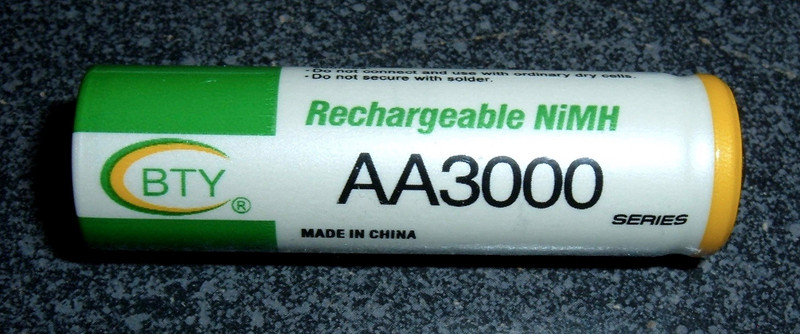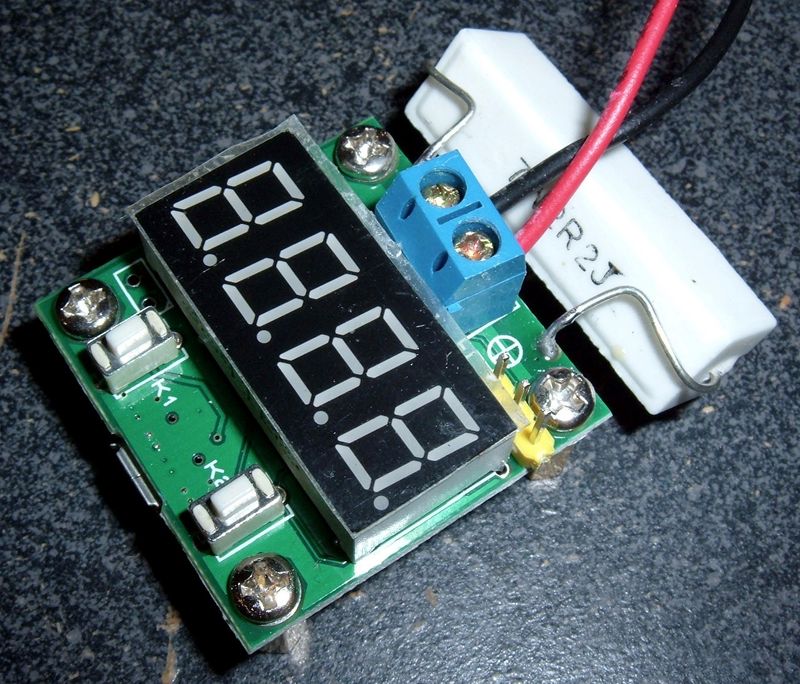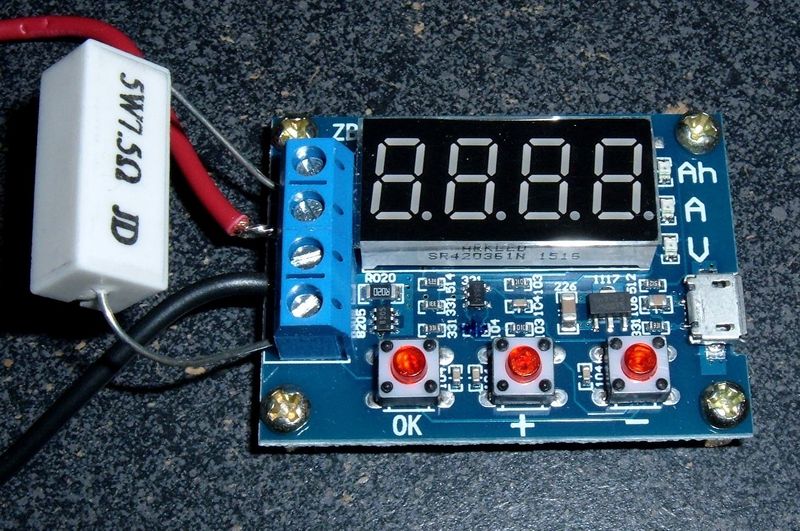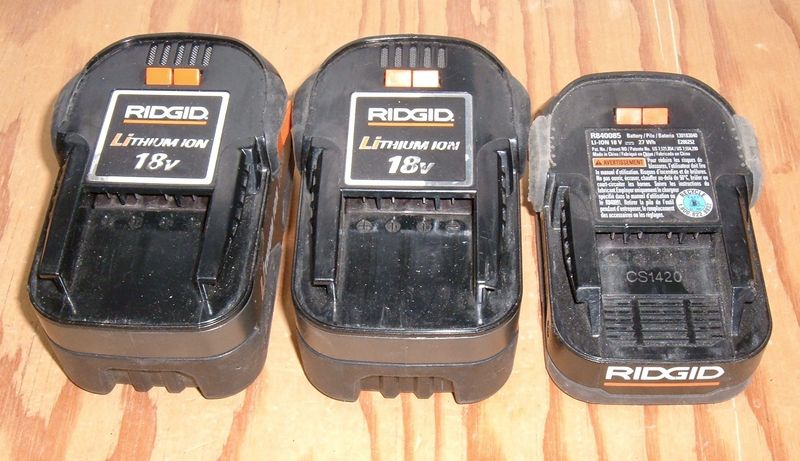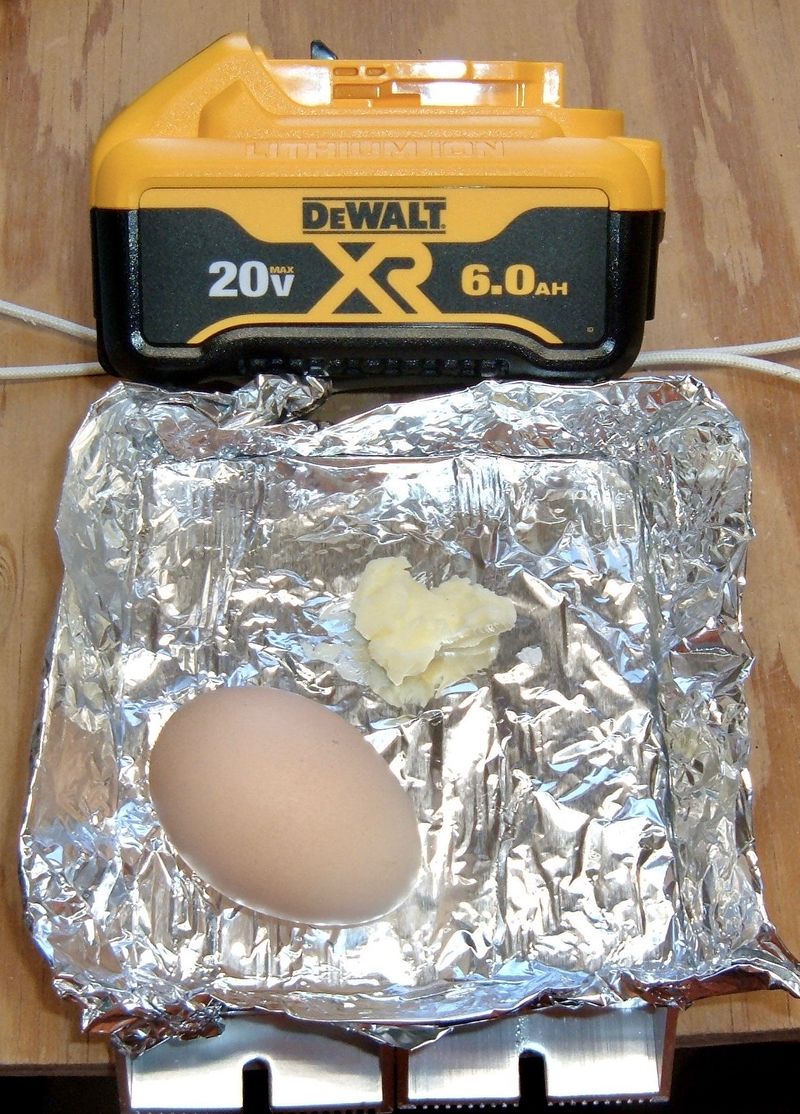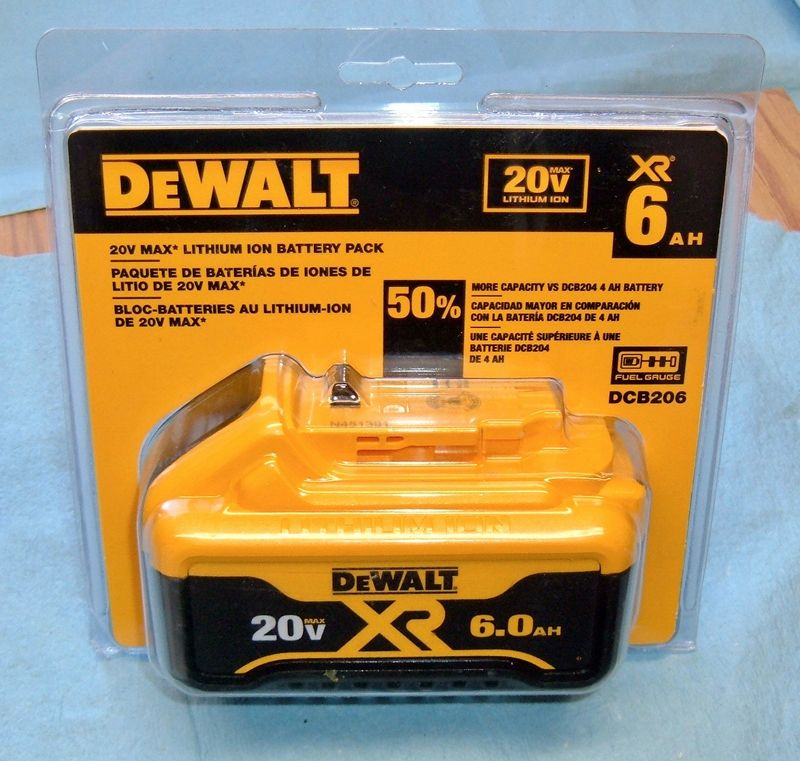In this photo, I have a Chinese BTY brand AA battery, AA3000 series. It’s rated at 3000mAh (according to the websites selling it - it doesn’t actually list capacity anywhere on the cell), and costs about $0.50 retail.
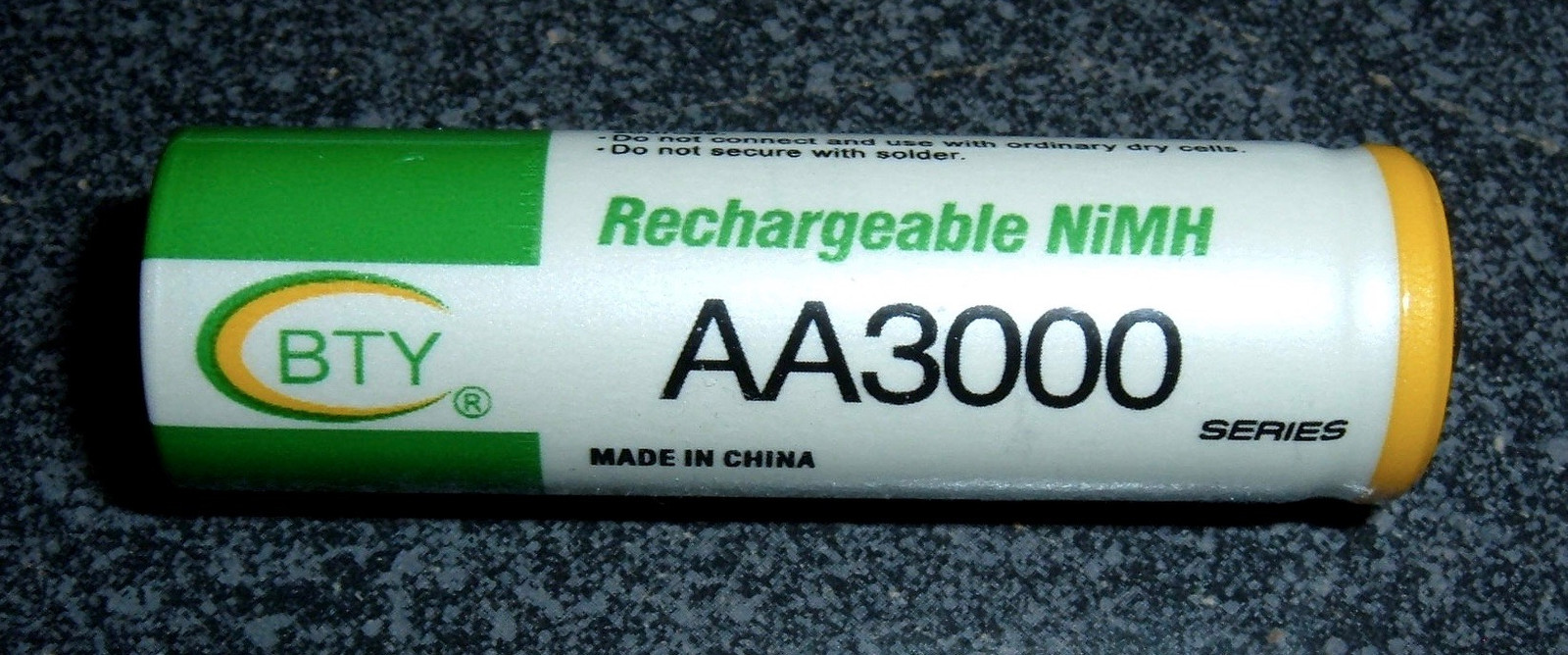
In this photo, I have an Energizer Recharge rechargeable NiMh battery. Same physical size (AA), rated at 2300mAh, and retails for around $1.50 or $2.
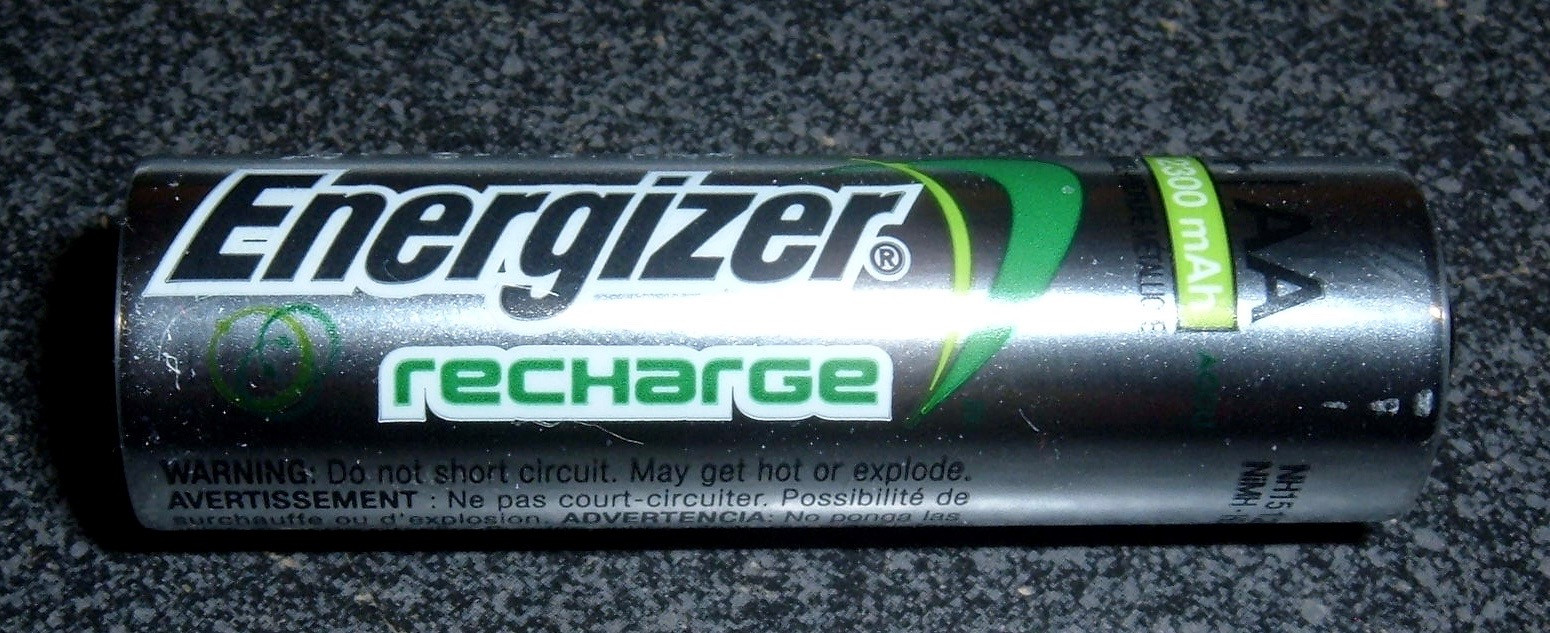
Shall we dare to compare? I think we shall! Read on for details of how crappy the Chinese batteries are…
Specs
I can find detailed specs for the Energizer Recharge 2300mAh batteries. They’re right here.
Specs, for the BTY batteries? Lol. ”Up to 3000mAh capacity!” or something is as good as you’re going to find. I’d note that 3000mAh is greater than the highest “honest” batteries out there, the Eneloop Pros, at 2550mAh.
Weight
It takes stuff to store energy. Let’s see how much stuff is in them!
BTY AA3000: 16g
Energizer Recharge: 28g (Energizer claims a typical weight of 30g, and my scale is cheap, so… it’s probably fine)
Those Chinese manufacturers are really onto something here. At 57% the weight of the Energizer, they’re providing 130% the capacity! Assuming, of course, that they work as rated. I’ll let you guess what disappointment might lie ahead…
Capacity
I’m testing these batteries at a few different current draws: two discharges at 0.5A, two discharges at 1.5A, and for fun, two discharges at 2.5A. I also make a note of the initial voltage observed during the discharge. The discharges cut off at 1.0v. The batteries came right off my VC4 charger - so 100%, fully, freshly charged (NiMH has a rather high self discharge rate).
NiMH batteries are generally regarded as being good for high drain devices, since they hold capacity at higher drains than your normal alkaline batteries. Assuming 2000mAh actual capacity, 0.5A is 0.25C, 1.5A is 0.75C, and 2.5A is 1.25C - reasonable discharge rates for NiMH batteries in fairly high drain devices. Energizer has charts for their batteries up to 2C discharge rates (4.6A), but the highest I can currently sink is 2.6A, so… I can’t quite test them up there yet.
Tests are performed with a four wire battery holder and my ZB206+ tester (review of that unit later). I’m also logging calculated watt-hours for fun. And for science.
Let’s see how they do.
BTY AA3000, 0.5A
Test 1: 1.33v, 277mAh, 327mWh.
Test 2: 1.33v, 313mAh, 368mWh.
BTY AA3000, 1.5A
Test 3: 1.23v, 110mAh, 119mWh.
Test 4: 1.23v, 66mAh, 73mWh.
BTYAA3000, 2.5A
Test 5: 1.23v, 93mAh, 102mWh.
Test 6: 1.23v, 197mAh, 202mWh.
Ouch. They don’t even come close to meeting a reasonable capacity for an AA battery. They don’t even come near the capacity of a decent AAA battery.
Notice that the capacity is all over the place as well, even at the same drain. This is really bad - it means that if you put the batteries into a series pack (so, pretty much anything, ever), you stand a very good chance of over-discharging the weakest battery.
Energizer Recharge, 0.5A
Test 1: 1.39v, 2079mAh, 2523mWh.
Test 2: 1.37v, 2044mAh, 2474mWh.
Energizer Recharge, 1.5A
Test 3: 1.36v, 2058mAh, 2415mWh.
Test 4: 1.35v, 2022mAh, 2371mWh.
Energizer Recharge, 2.5A
Test 5: 1.37v, 2125mAh, 2467mWh.
Test 6: 1.35v, 2111mAh, 2451mWh.
Much better. There’s some variance, and I’m a bit surprised that the measured capacity at 2.5A is greater than the lower amperage tests, but the batteries come in at a reasonable capacity for a 2300mAh rated battery. I suspect if I tried an 0.1A draw or something, in perfect temperature conditions, they’d hit it. Also, there’s some amount of tolerance in my tester. But, the difference between these and the BTY cells is absolutely astounding.
Internal Resistance
I also tested the internal resistance, before and after discharging, with my shiny 4 wire ZB206+ tester. Values are sorted in increasing order.
BTY AA3000, Fully Charged
30mOhm
31mOhm
31mOhm
32mOhm (after dropping from about 70 over 10 seconds)
BTY AA3000, Discharged
30mOhm
34mOhm
34mOhm
35mOhm
42mOhm
55mOhm (!!)
Energizer, Fully Charged
18mOhm
18mOhm
19mOhm
18mOhm
Energizer, Discharged
22mOhm
24mOhm
25mOhm
25mOhm
26mOhm
29mOhm
Conclusions
Well, what did you expect from cheap Chinese batteries? They’re junk. Utter and complete crap. Some smart chargers won’t even charge them, they’re so bad.
They’re lucky to hit 10% of rated capacity under a light load, and capacity is all over the place. They’re radically lighter than batteries that make a good effort towards rated capacity, their IR is 50% greater (which affects voltage drop under load) and variable, and even for the cost, they’re not worth buying. Really, they’re not even worth it for free. You’ll be changing them constantly, even on incredibly low drain devices. Just say no and buy some decent batteries.
On the other hand, the Energizer batteries seem quite solid. They’re certainly no Eneloop, but if you can get them for under $1.50/cell, they’re definitely quite nice batteries for general use!
Comments
Comments are handled on my Discourse forum - you'll need to create an account there to post comments.If you've found this post useful, insightful, or informative, why not support me on Ko-fi? And if you'd like to be notified of new posts (I post every two weeks), you can follow my blog via email! Of course, if you like RSS, I support that too.
